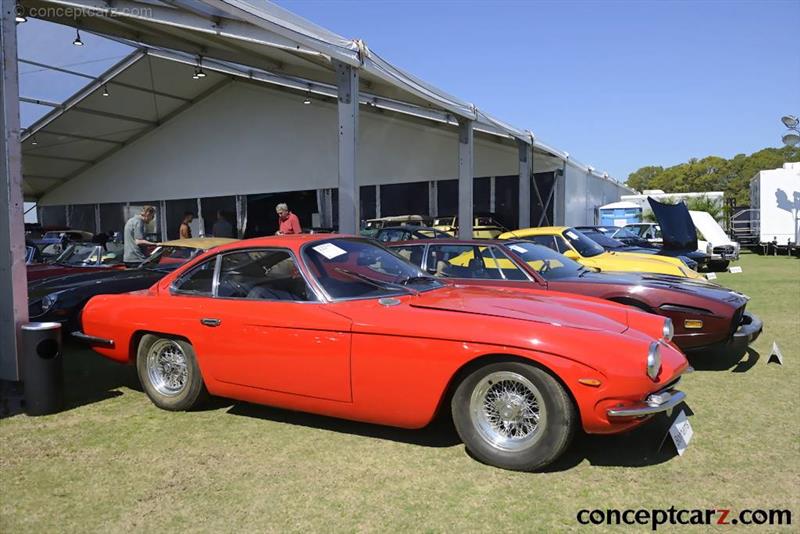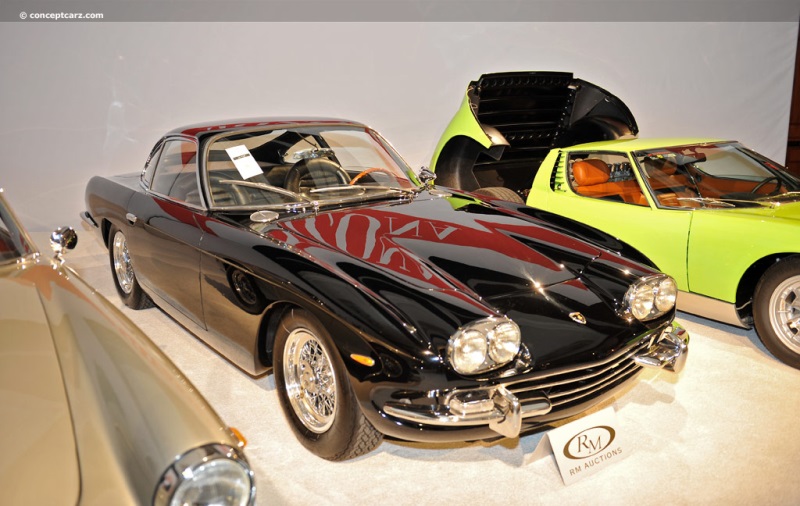There were plenty of Grand Touring automobiles produced in Europe and North America during the 1950s and 1960s that offered exclusively, performance, style, and luxury. Lincoln had created the Continental division and Chrysler the Imperial division near the mid-1950s specifically for these purposes. Around this time, Maserati retired from factory racing participation to focus on building road-going grand tourers. Their 3500 GT of 1957 was the company's first model built from the ground-up as a grand tourer and their first series-produced car. Facel introduced its Vega in 1954, quickly gaining a reputation for its sleek and modern lines, elegance, exceptional performance, and exclusivity. Dual-Ghia followed a similar formula, employing Chrysler components and pricing them well beyond the reach of most consumers. Equally impressive and sophisticated machines were being built by Aston Martin, Mercedes-Benz, Rolls-Royce, Bentley, and Jaguar (to name a few). 
CoupeFerruccio Lamborghini of Italy was a successful tractor and air conditioning manufacturer who purchased several Ferrari automobiles. As a loyal customer, he approached Enzo Ferrari with suggestions for improvement, stating that the cars were too noisy, had poorly built interiors, and their operation was 'rough' for road-going purposes. When Mr. Ferrari challenged Mr. Lamborghini to build a better car, a dynasty was birthed. But Mr. Lamborghini could have simply walked away and supported many of the other 'proper' road-going ventures of the era. Just like the Ford Motor Company would do with his GT40 program, Mr. Lamborghini responded when Enzo dropped the gauntlet.Enzo Ferrari inspired (err...upset/challenged/provoked) many people which ultimately led to greatness in their own respect. Among them was the 'Great Walkout' at Ferrari in 1961, when Carlo Chiti, Giotto Bizzarrini, Tavoni, and five others left the company following a dispute that began with the unwelcome presence of Enzo's wife, Laura. The growing aggravation among these top engineers resulted in an ultimatum to Il Commendatore, resulting in a response of 'if you are unhappy with how things are being run at Ferrari, you may take your services elsewhere.' Basically, the same message sent to Ferruccio Lamborghini and the Ford Motor Company. The response was the same from each - all excepting the challenge.Automobili Lamborghini S.p.A. was formed in 1963, employing the talented engineers who had recently left Ferrari. The engineering firm Società Autostar led by Giotto Bizzarrini was tasked with designing the V12 engine for the new car, with a displacement size similar to Ferrari's 3-liter V12. The chassis was penned by Italian Gian Paolo Dallara of Ferrari and Maserati fame, aided by a team that included Paolo Stanzani and Bob Wallace. The body styling, however, was created by a then-relatively unknown designer named Franco Scaglione.
Coupe
Chassis #: 01252
Engine #: 1418
View info and history
Auction entries : 1In a mere four months, the talented designers and engineers created the 350GTV, unveiled in October 1963 at the Turin Motor Show (albeit sans engine). The production model was called the 350GT and bestowed with restyling by Carrozzeria Touring of Milan, and a new chassis was constructed in-house. Bizzarrini's V12 engine produced 360 horsepower, but Mr. Lamborghini (much to Bizzarrini's refusal), had the engine detuned for mass production, with lower revolutions and various other modifications that favored the road (rather than the track). Gian Paolo Dallara make improvements to the engine in 1965, resulting in a displacement increase to 3.9-liters and an output rated at 320 bhp at 6,500 RPM. This birthed the 400GT, which was essentially a 350GT with the larger engine. The 400GT 2+2 was introduced in 1966 at the Geneva Auto Show, with a stretched platform to accommodate the 2+2 seating arrangement, along with other minor updates. While many of Enzo Ferrari's Grand Tourers were created from race cars, Lamborghini's Grand Tourers were specifically designed for the road. Both relied on performance and styling, but Lamborghini's formula sacrificed a degree of performance in favor of luxury and road-going sophistication. Ferrari had a legacy formed from its competition prowess, while Lamborghini had a novice status as an automobile manufacturer. Rather quickly, Lamborghini quickly dispelled any lingering doubts about its ability to compete with the world's best Grand Tourers. The Lamborghini 400GT 2+2
The Lamborghini 400GT 2+2 retained the styling of its 350GT predecessor and its 100.4-inch wheelbase, but added the vestigial rear seating and subtle styling alterations. (The 350 GT, 400 GT Interim, and 400 GT 2+2 all shared the same 100.4-inch wheelbase.) The roof was raised 2.6-inches and a floor pan was lowered. Revisions to the upper and lower rear control arms in the front to the rear arrangement resulted in additional interior room. To streamline production, the bodies were produced in steel, rather than aluminum. Production costs were lowered and durability increased with the change to steel, with only the trunk and hood remaining aluminum. A single 23-gallon fuel tank replaced dual 10.5-gallon tanks on the previous model, and an additional windshield wiper was added. The suspension incorporated double wishbones, four-wheel disc brakes provided the stopping power, and the 4.0-liter (3929cc) engine was paired with a Lamborghini-built five-speed gearbox designed by Chief Engineer Gian Paolo Dallara, replacing the earlier ZF-derived gearbox. Borrani wire wheels were wrapped with Pirelli tires.
Coupe
Chassis #: 01213
View info and history
Auction entries : 1Twenty-three examples were 400 GT Interim models, and 224 were the 400 GT 2+2, built from 1966 to 1968 when it was replaced with the Islero.
by Daniel Vaughan | Apr 2022
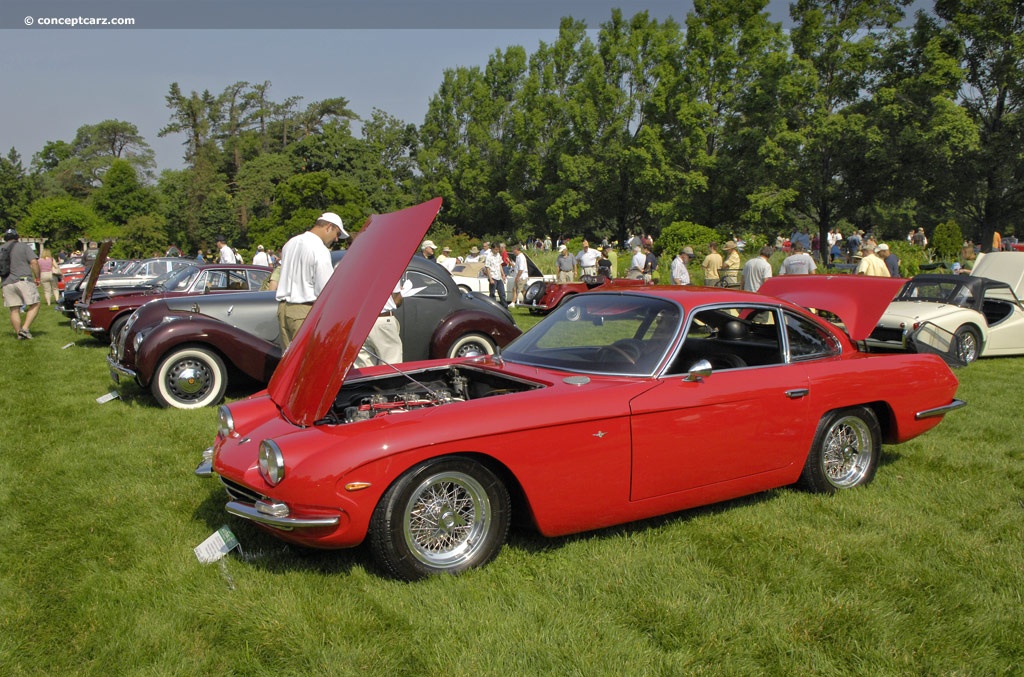
Coupe
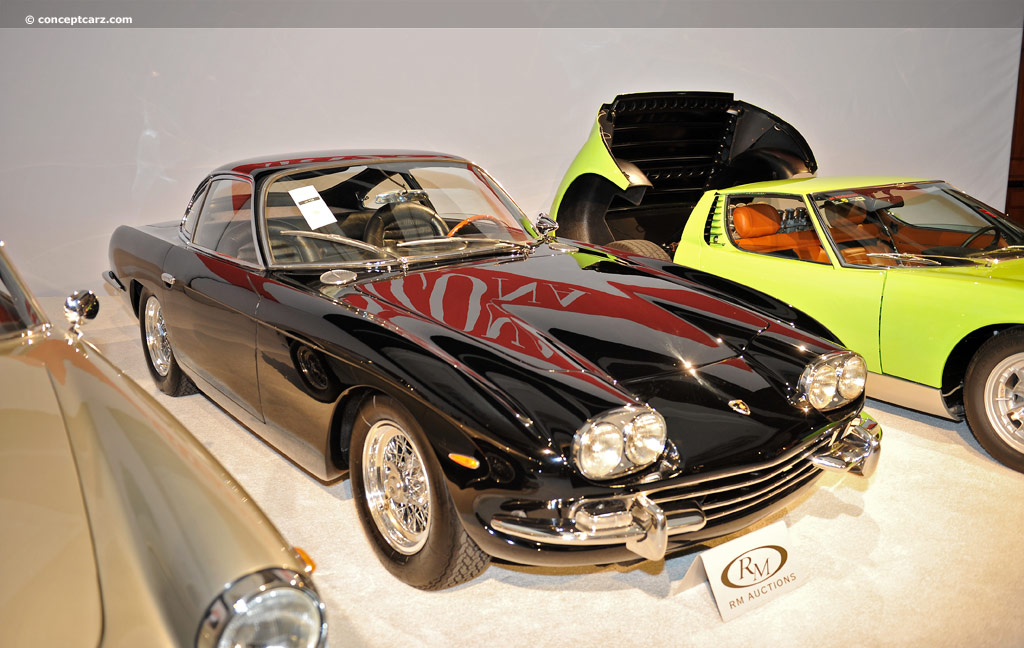
Coupe
Chassis #: 01252
Engine #: 1418
View info and history
Auction entries : 1
The Lamborghini 400GT 2+2 retained the styling of its 350GT predecessor and its 100.4-inch wheelbase, but added the vestigial rear seating and subtle styling alterations. (The 350 GT, 400 GT Interim, and 400 GT 2+2 all shared the same 100.4-inch wheelbase.) The roof was raised 2.6-inches and a floor pan was lowered. Revisions to the upper and lower rear control arms in the front to the rear arrangement resulted in additional interior room. To streamline production, the bodies were produced in steel, rather than aluminum. Production costs were lowered and durability increased with the change to steel, with only the trunk and hood remaining aluminum. A single 23-gallon fuel tank replaced dual 10.5-gallon tanks on the previous model, and an additional windshield wiper was added. The suspension incorporated double wishbones, four-wheel disc brakes provided the stopping power, and the 4.0-liter (3929cc) engine was paired with a Lamborghini-built five-speed gearbox designed by Chief Engineer Gian Paolo Dallara, replacing the earlier ZF-derived gearbox. Borrani wire wheels were wrapped with Pirelli tires.
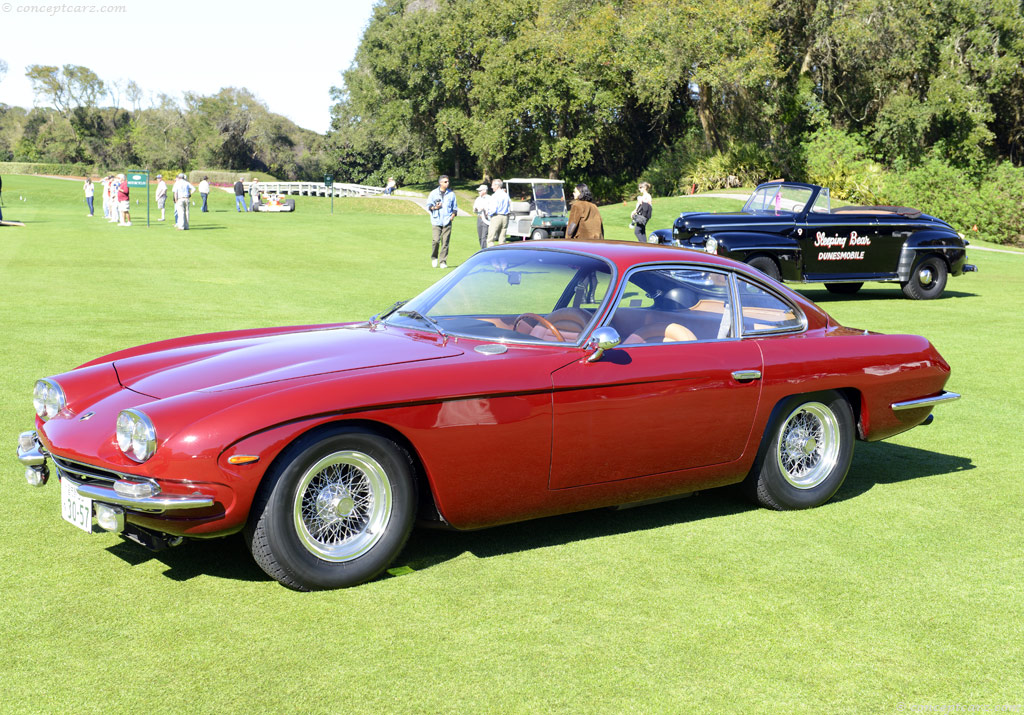
Coupe
Chassis #: 01213
View info and history
Auction entries : 1
by Daniel Vaughan | Apr 2022
Related Reading : Lamborghini 350/400 History
Ferruccio Lamborghini had built a significant amount of wealth as a tractor builder. When he bought a Ferrari he expected a vehicle with superior performance and few problems. What he got was a car that did have superior performance but was plagued with mechanical difficulties. Upon returning the vehicle to the Ferrari shop and complaining about the lack of build quality, Enzo Ferrari replied You....
Continue Reading >>
Continue Reading >>
Similar Automakers
1968 Lamborghini 400 GT 2+2 Vehicle Profiles
Recent Vehicle Additions
Performance and Specification Comparison
400 GT 2+2 Specification Comparison by Year
Year
Production
Wheelbase
Engine
Prices
Related Automotive News

Automobili Lamborghini's history on the ice in St. Moritz
Lamborghini Polo Storico stars at The I.C.E. Concours dÉlégance, featuring the Jarama GTS and 400 GT 22 from the Lamborghini Museum in SantAgata Bolognese
Automobili Lamborghini participated in The I.C.E. (International...

Lamborghini 350 GT returns to Geneva 60 years after its debut
Automobili Lamborghini celebrates its first production model by taking it back to the city where it was unveiled in 1964 by Ferruccio Lamborghini
In March 1964, Automobili Lamborghini was still in its infancy. Established just a few months previously,...

Pebble Beach Auctions Online Catalogue Now Live; Historic, Unrestored 1962 Ferrari 250 GT SWB Berlinetta Unveiled as Headlining Car
Gooding %26 Company launches its entire online catalogue for the Pebble Beach Auctions, announces a remarkably original 1962 Ferrari 250 GT SWB Berlinetta along major Italian star cars.
Gooding %26 Company, the official auction house of the Pebble...

Miura: the world's first production car equipped with a transverse central - rear mounted V12 engine
The story of a legendary engine in the year of the V12, ahead of the hybrid model launch in 2023
In 1966, the Lamborghini V12 engine firmly established itself as an all-time legend when it was mounted transversally in a rear-mid position on...

The Best Of Lamborghini At London Concours 2020
The London Concours has announced its Great Marques Lamborghini display, celebrating the very best from SantAgata
Line-up includes icons early pioneers like the 400GT and iconic Miura, through to the Diablo SV, Murcielago and Aventador SVJ
Les...

Very Early, Extremely Low Production Lamborghini 350 GT Promises to Ignite the Block at Russo and Steele's 2016 Arizona Auction Event
Scottsdale, Arizona (December 8th, 2015) – The 350400 GT Series represented Ferruccio Lamborghinis intention to construct the finest Grand Touring automobiles ever assembled. Many automotive journalists at the time hailed the cars as being better...





























